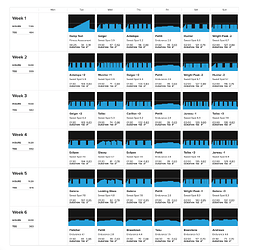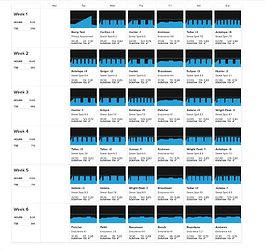Hey everyone,
I wanted to share a long-term perspective on my experience with TrainerRoad — especially in relation to the introduction of Adaptive Training (AT) back in 2021. I’ve been a user since 2014 and have built up a pretty deep FTP history along the way. TrainerRoad has been the backbone of my training for over a decade, and I genuinely credit it for much of my growth as a cyclist. I regularly recommend it to friends and fellow riders. That said, I think it’s fair — and constructive — to critically assess how some of the recent changes may be impacting long-time users who’ve been through many seasons of structured training.
 TL;DR – My Theory
TL;DR – My Theory
- TrainerRoad worked brilliantly for me until 2021, when Adaptive Training was introduced.
- From 2014 to 2020, my FTP steadily rose from ~200W to a peak of 326W.
- After 2021, I experienced a plateau and slow decline, despite consistent use of TR and Adaptive Training.
- Since reverting to the older-style SSB HV plans in February 2025, I’ve seen renewed gains — up to 316W in June 2025.
 About Adaptive Training
About Adaptive Training
Adaptive Training and AI absolutely have their place — they just haven’t been a good fit for me since I plateaued. On the topic of pushing through plateaus, I remember a great old TR podcast that covered this really well, linked here.
Right now, I’m following the old/original SSB High Volume plans — the ones no longer officially available — and they’re working much better for me.
 FTP Trend Analysis
FTP Trend Analysis
I reviewed my entire FTP history by grouping results into three phases:
| Period | Avg FTP | Peak FTP | Comments |
|---|---|---|---|
| Pre-Adaptive (before Mar 2021) | ~307W | 326W | Strong upward trend |
| Adaptive Training (Mar 2021 – Jan 2025) | ~305W | 318W | Plateau and slight decline |
| Reverted Plans (Feb 2025+) | 312W | 316W | FTP rising again |
From March 2021 through early 2025, my FTP flatlined. Since switching back to traditional TR plans without Adaptive logic, I’ve been steadily improving again.
 Dumbing Down of SSB Plans?
Dumbing Down of SSB Plans?
Another thing that happened around the same time as AT’s rollout was the restructuring of the Sweet Spot Base plans.
Let’s call it the “Dylan Johnson effect”. His video critiquing the intensity of TrainerRoad’s traditional Base plans gained a lot of attention. Shortly after, TR released plan updates that emphasized sustainability and reduced early-week intensities — likely a move toward improving compliance.
That’s understandable, but here’s the problem for long-term users:
The old SSB High Volume plans provided a significantly greater training stimulus.
For example:
Final week of SSB HV II = TSS 731
Final week of General Base HV II = TSS 591
That’s a 19% drop in maximum weekly load.
There’s clearly a balance to be had — we want people completing workouts and avoiding burnout. But if plans are too easy or conservative, many of us simply won’t see gains.
 Request: Create A True Custom Plan Builder
Request: Create A True Custom Plan Builder
TrainerRoad has said the old plans aren’t coming back. I get that.
But for athletes like me who’ve already been through years of training cycles, I’d love to see a true custom plan builder:
- Build your own multi-week plan
- Include full calendar logic (progressions, recovery weeks, etc.)
- Save and reuse plans
Right now, building a long-term custom plan means manually copying workouts and fiddling with calendar weeks — it’s cumbersome and prone to errors.
 Final Thoughts
Final Thoughts
- AT is great for newer or inconsistent athletes, and the idea behind it is solid.
- But for experienced riders chasing marginal gains, it may fall short by capping stimulus or overly smoothing progressions.
- I’d love to see TR support both ends of the spectrum: those new to structured training, and those of us who know exactly what we need.
Thanks for reading. Would love to hear from anyone else who’s taken similar steps — or disagrees! Always happy to exchange ideas backed by data.
P.S. Shoutout to AI for helping put this all together — otherwise this post would still be in my head, not the forum.


